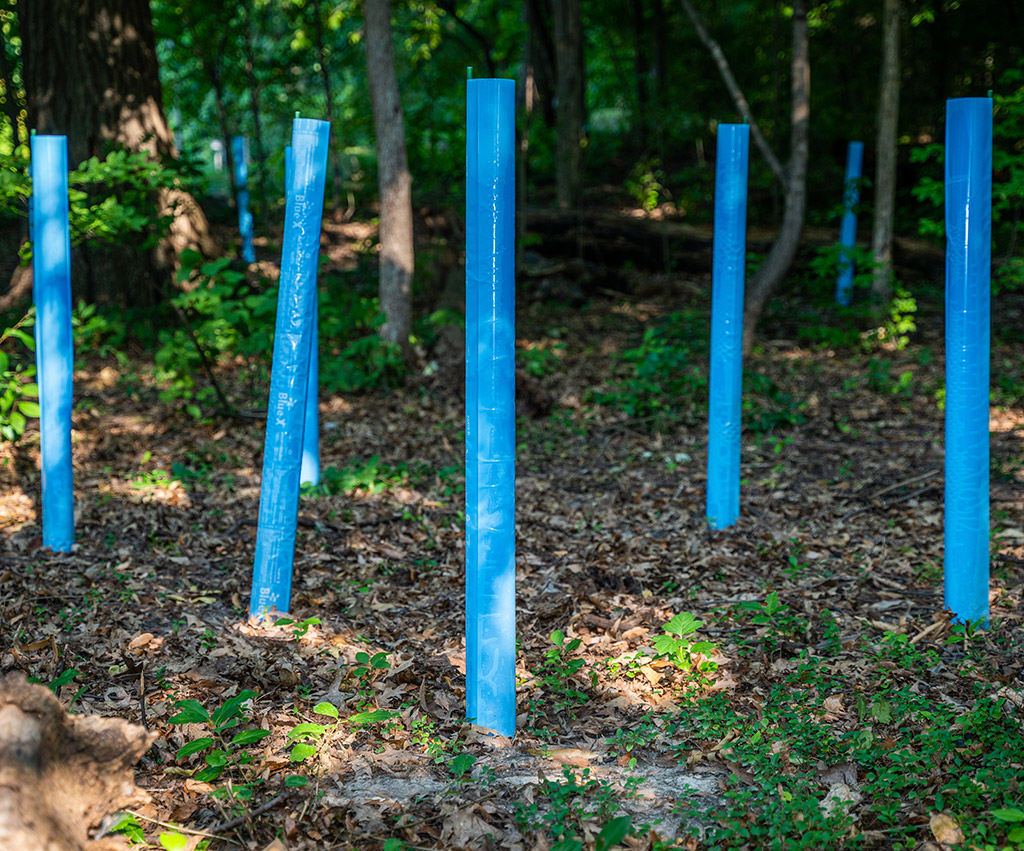Dozens of trees inside the Zoo are feeling blue. No, that doesn’t mean they’re sad; it means they are getting some extra power and nutrients to grow big and strong. Inside the Zoo, you may have noticed tall, skinny, blue tubes among the trees. Inside the tubes are saplings. These blue tubes are specifically designed to filter the sunlight and give the trees more concentrated blue light resulting in stronger stems and roots and eventually a heartier plant.
Ryan Fenley, the head of forestry at the Zoo, started using the tubes for the first time this year. He first saw them at the Urban Ecology Center and began to do his own research. He is using them to grow basswood, river birch, bitternut hickory, bur oak, sycamore, tamarack and American hazelnut. “[The tubes] protect the trees from the wind. Wind will dehydrate a plant so these tubes will keep them hydrated longer , ” Fenley explains. They also keep wildlife from eating or killing the young saplings and help Fenley keep an inventory of where trees are planted.

Fenley planted a variety of trees in five different locations throughout Zoo. Some are visible from the train; others are near walking paths. While reforestation is always a goal, these trees will also hopefully keep buckthorn from growing. Buckthorn is an invasive plant that doesn’t allow native plants or trees to grow, plus it can give birds diarrhea. “It’s a huge problem at the Zoo. So, we are slowly getting rid of it and replacing it with mostly Wisconsin native trees,” says Fenley. The tubes will stay on these trees for at least three years. Fenley will plant more trees in new blue tubes next year.
